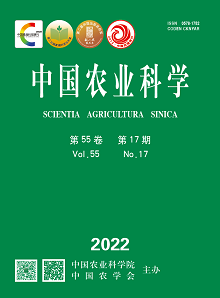【Objective】 The field experiment was conducted from 2018 to 2020, in order to determine the optimized fertilization amount and methods of spring wheat, and to improve yield and water use efficiency on rain-fed area of northwest China. 【Method】 The spring wheat (Longchun 35) was selected as test material. Three fertilization depths with nitrogen reduction application included shallow application (PM-N), deep application (PMD), and layered application (PMA), and the control was traditional nitrogen shallow application (PM). The soil water content in 0-300 cm profile, aboveground biomass, leaf SPAD value, canopy temperature and leaf area index (LAI) in different growth stages, as well as grain yield of wheat were recorded. The soil water storage (SWS), periodical evapotranspiration (ET), water use efficiency (WUE), plant nitrogen accumulation (PNA) and nitrogen partial productivity (PFPN) were calculated to understand the effects of the deeper and layered application of chemical fertilizer on nutrient and water utilization from the aspect of soil moisture, canopy development and grain yield. 【Result】 PMA and PMD significantly regulated the process of water consumption during the growth period of spring wheat. From seedling to jointing stage, the water consumption in 0-300 cm profile of PMA and PMD increased by 11.8-20.4 mm and 15.1-25.4 mm compared with PM, respectively, and increased by 10.7-14.6 mm and 9.3-20.0 mm compared with PM-N, respectively. From heading to filling stage, the water consumption increased by 15.1-39.8 mm and 16.5-26.5 mm compared with PM, increased by 18.1-48.7 mm and 19.5-35.4 mm compared with PM-N, respectively. Correspondingly, the average SPAD value, LAI and biomass during the growth period of spring wheat of PMA and PMD were increased by 7.2% and 4.2%, 23.0% and 19.4%, 34.6% and 17.8% compared with PM, respectively, and increased by 7.6% and 5.4%, 17.7% and 10.8%, 38.5% and 23.4% compared with PM-N, respectively. However, the canopy temperature of PMA after jointing, and that of PMD after heading was decreased by 8.5% and 4.5% compared with PM, respectively, and decreased by 8.6% and 4.8% compared with PM-N, respectively. The grain number was increased by 4.3% and 4.0% compared with PM, respectively, and increased by 4.8% and 4.2% compared with PM-N, respectively. The spike number was increased by 10.1% and 6.2% compared with PM, respectively, and increased by 11.0% and 7.8% compared with PM-N, respectively. The yield, WUE, PNA and PFPN of PMA and PMD were increased by 10.5% and 5.1%, 11.8% and 6.2%, 48.0% and 35.7%, 38.2% and 31.3% compared with PM, respectively, and increased by 15.7% and 10.0%, 14.1% and 8.0%, 51.8% and 40.4%, 15.7% and 10.0% compared with PM-N, as compared with PM-N, respectively. The yield, WUE and PFPN of PMA were increased by 5.2%, 4.8% and 5.2% compared to PMD, respectively. The significant difference of the indices between PM-N and PM were not observed, except the PFPN of PM-N was significantly increased by 21.0% compared to PM. 【Conclusion】 While the amount of chemical N application was reduced from 150 kg·hm-2 to 120 kg·hm-2, both PMD and PMA could increase the grain yield, nitrogen and water utilization, which should be widely extend on the northwest loess plateau.









